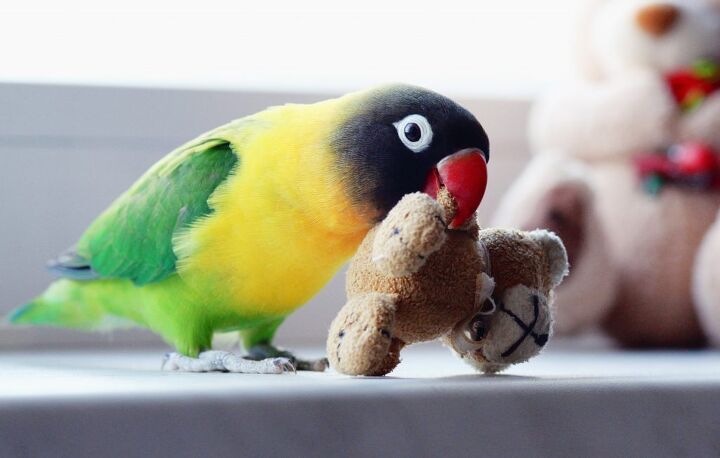Fischer’s Lovebird


About Fischer’s Lovebird
The Fischer’s Lovebird is a small parrot species first discovered in late 19th century by Gustav Fischer, a German explorer of Africa, whose name these birds bear. Popular pet birds, these lovebirds are famous for their mischievous, inquisitive nature, and are loved as funny, cute and in-general playful birds. Small and nimble, Fischer’s Lovebirds are a handful of fun, certain to put a smile on everyone’s face with their antics and tricks. They are entertaining, cute and demand a lot of socializing and play time. This makes Fischer’s Lovebirds a perfect family pet.
Fischer’s Lovebirds are the picture of cuteness! They are playful little explorers.
Native Region/Natural Habitat
The natural habitat of this particular lovebird breed is exclusive to a small region in Tanzania, south and southeast of the famous Lake Victoria. There, they live in flocks, preferring small clumps of trees in the midst of the regions vast grass plains. In the wild, the populations reach up to a million birds, while in captivity these birds are popular and readily available as pets.
They share a lot of traits with most other lovebirds, and likewise, the Fischer’s Lovebird is a small bird. Usually, they’ll grow to about 5.5 inches, and weigh up to 2 ounces. They have a small, stocky frame, and unlike most parrots – a short, blunt tail. Their beaks are large and sharp, and also the bird’s favorite tool, which they often use for mischievous purposes!
The Fischer’s Lovebird is vocal and noisy little parrots. Being highly social and requiring a lot of interaction, they will sing in their loud, shrill and sometimes piercing high pitched voice, as a part of their nature. Though the sounds can be lively and fun at times, for some people, they can be rather noisy and tiring when prolonged. Of course, this also means that these little lovebirds are not a good choice for apartments.
These birds are mostly of a vibrant and bright green color, with yellow gradients underneath, on their belly. Their cheeks, throat and forehead are of a distinctively reddish orange color. This combination gives them their unique and recognizable look. Their eyes are rounded by a visible white ring, making identification easy. Sometimes, the top of their tails can show a dim blue color. In captivity, the breeders created several color mutation that can also be seen often. These include yellow, blue and white colors.
These birds have bright and lovely color combinations that are easily recognizable.
Fischer’s Lovebirds will eat a wide variety of foods. Mostly, these are centered on seed mixes and fruits. Be sure to add fresh fruits as well, to ensure a varied and healthy diet. Being very active and inquisitive, even though small, they will prefer a large and roomy cage. This will satisfy their need to be active and move about. A chance to fly freely and explore around the house will keep them occupied and entertained, preventing boredom and apathy. Of course, if you plan on letting your bird out of its cage, make sure you’ve parrot-proofed your house: this means closing all doors and windows, removing houseplants that are toxic to pet birds, and hiding electrical cables.
Apathy and prolonged silence is a sure sign of a problem in Fischer’s Lovebirds. Another issue is feather picking, a result of loneliness or boredom. These are very socially dependent birds, so they are often kept in pairs. In general, they are healthy throughout their lifespan, which can reach up to 15 years.
Be sure to provide a partner for your Lovebird. They will love the company and the interaction.
As they are flocking birds in the wild, these vocal avians thrive in company, and their highly social behavior is not reserved only for other members of the species: if they were hand fed, Fischer’s Lovebirds will be more than happy to interact with their owner.
These little birds are all about activity. They are quite the little explorers and mischievous troublemakers. They love to chew, and figure out how things work. Given a chance, they’ll hide about the house, attempt to open their cages, nibble on your buttons or jewelry, and in general – be quite the little devils. All of this is moderate though, and more than often cute and entertaining.
Photo credit: xpixel/Shutterstock; DarAnna/Shutterstock; cynoclub/Shutterstock

A proud mama to seven dogs and ten cats, Angela spends her days writing for her fellow pet parents and pampering her furballs, all of whom are rescues. When she's not gushing over her adorable cats or playing with her dogs, she can be found curled up with a good fantasy book.
More by Angela Vuckovic
























